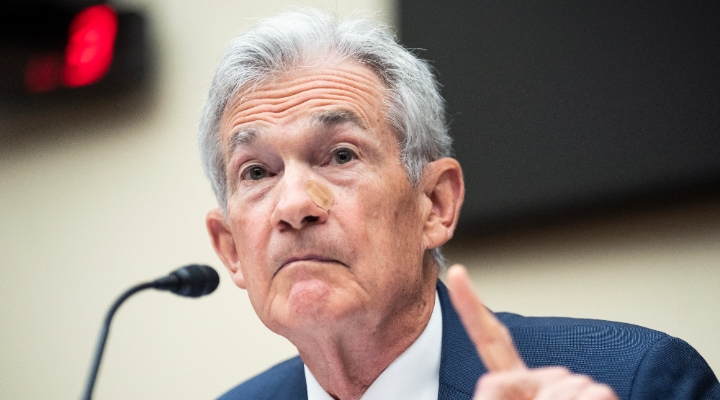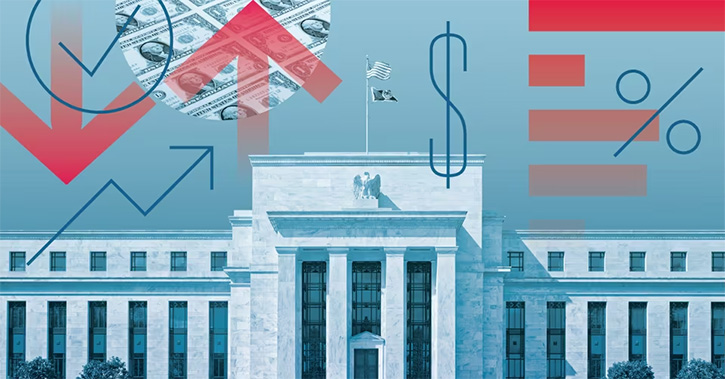
As expected, the Fed announced a 0.5 percentage point increase in the federal-funds rate on Wednesday, as well as plans to reduce its portfolio of long-term securities. Back in March the central bank raised interest rates for the first time since the onset of the pandemic recession, when it took the funds rate from zero to 0.25%. The half-point increase at Wednesday's meeting was the first rate hike of that size in 22 years.
With Fed chair Jerome Powell having signalled in late April that a half-point increase was likely, the question on the minds of many investors was what would happen next. Would the Fed be stepping up the pace of rate increases even further to battle stubbornly high inflation?
In recent days, bond markets had begun to price for the Fed shifting into very high gear, with expectations growing for a 0.75 percentage point increase at the June meeting. The Fed hasn’t raised rates by that amount since 1994.
Powell threw cold water on that scenario at his press conference following the meeting of the policy-making Federal Open Market Committee.
“There’s a broad sense that an additional 50 basis points should be on the table at the next couple of meetings,” Powell says. “Seventy five basis points is not something the committee is actively considering.”
That came as a relief to bond and stock markets, with rallies in both following the Fed decision.
Hike Expectations Accelerate
Nonetheless, rate hike expectations have increased sharply in the weeks running up to the committee's meeting, which the Fed has validated by voicing support for multiple 50-basis-point hikes over the rest of this year. Futures markets imply that the fed funds rate will hit 3.25% by the first quarter 2023, the highest since 2007.
Bond markets have baked in these rate hike expectations, which has caused yields to soar. This means the Fed’s hawkish shift is already starting to have an impact on the economy. A common misconception about monetary policy is that tightening occurs simultaneously with rate hikes. Instead, tightening occurs as soon as expectations about future rate hikes have been incorporated into bond yields, which is what has occurred in recent months. This is because most borrowing in the economy is not tied to the federal-funds rate (the shortest-term interest rate), but rather longer-tenured yields.
Indeed, the 30-year mortgage rate has soared to over 5%, its highest in over a decade, from about 3%. This has led to an abrupt collapse in housing affordability, which is likely to weigh heavily on demand in the coming months. As a result, we recently revised down our housing starts projection for 2023 to 1.45 million, a 10% decline from 2022 levels.
A key question is how much higher long-term bond yields could go, especially with the Fed now about to start drawing down its portfolio of long-term securities accumulated during its quantitative easing program. The Fed plans to let assets from its $9 trillion balance sheet roll off upon maturity, up to a maximum rate of $95 billion in net asset sales per month by September 2022.
Labour Market Boost
Bond markets have had plenty of time to plan for this upcoming “quantitative tightening,” nevertheless it is likely that further yield increases will come given the sheer magnitude of the Fed’s sales. We suspect the Fed will calibrate its asset sales to keep yields in reasonable territory, but clear guidance on this matter hasn’t been forthcoming.
Continued strength in the economic recovery clears the way for the Fed to pursue a policy of aggressive monetary tightening. The unemployment rate is already essentially back to its pre-pandemic mark, while the overall rate of employment is not far behind as the rate of labour force participation has begun to recover. The surprise 1.4% drop in US real gross domestic product in the first quarter reflects mostly noise, in our view, as underlying spending continues to grow.
Instead, the news of recent months has strengthened support for the Fed’s case to tighten policy to fight inflation. Headline CPI growth reached 8.6% year on year in March on the back of skyrocketing oil prices. The European Union has recently moved closer to enacting a full embargo on Russian oil, which will hamper relief from high oil prices. Meanwhile, an escalating lockdown in China creates risk of further disruption to global supply chains.
Reflecting the degree to which the surge in inflation has become front-page news, in an unusual move Powell began the press conference with comments aimed broadly at the public. "Inflation is much too high, and we understand the hardship it is causing, and we're moving expeditiously to bring it back down,” he said.





























